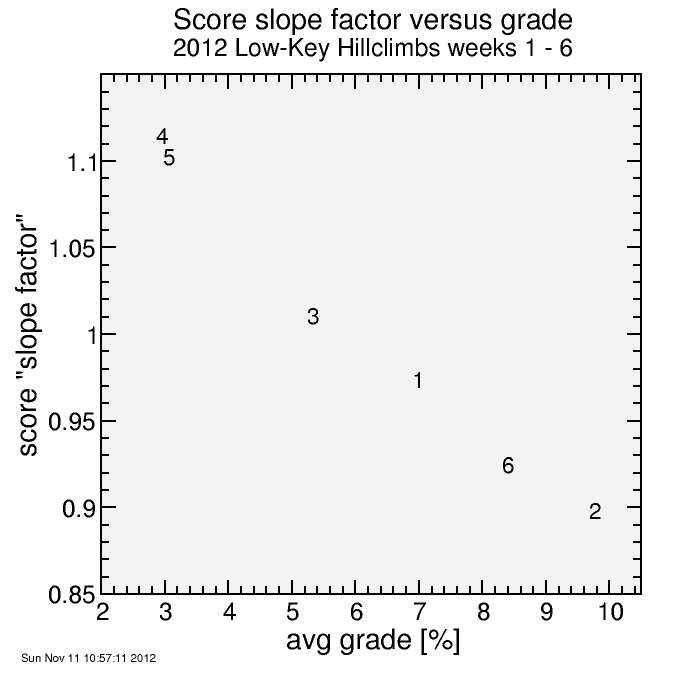Low-Key Hillclimbs: score slope factor versus road grade
In the Low-Key Hillclimbs this year I've introduced a parameter I call the "slope factor". After calculating scores as 100 multipled by the ratio of a reference time to a rider's time, I raise the (score/100) to a power equal to the "slope-factor" (it's a slope on a log-log plot). If the scores are more compressed than average (given the riders who turned out for that week), the slope factor will be larger than one, and the adjustment will spread the scores out more. If they're more spread out than average, the slope factor will be less than one, and the scores will be compressed. This was done based on the observation, consistent with physics, that steeper climbs tend to result in a larger relative separation in times, while more gradual climbs tend to result in a more compressed separation.
Here's a plot of slope factors calculated for the scores so far this year, plotted versus the average grade of each road. Each point is marked by the week number.

The points fall in a nice line. Noteworthy is weeks 1, 2, and 6 were mass start, week 3 was small groups, while weeks 4 and 5 were "no drafing" individual starts. There's not much evidence the start type has a strong effect, although start type is correlated with road grade. To really test this we'd want to compare the same climb done with two different start formats.
In any case, it appears the slope factor is accomplishing what it was intended to do, which is to reduce the effect of road grade on the spread in scores.
The two remaining weeks are Kennedy, which is self-timed (a dirt climb which is a mixture of small groups and individuals), and Mount Hamilton (which includes substantial descents). These are each sufficiently atypical that it wouldn't surprise me if they fall off the smooth curve.

Comments